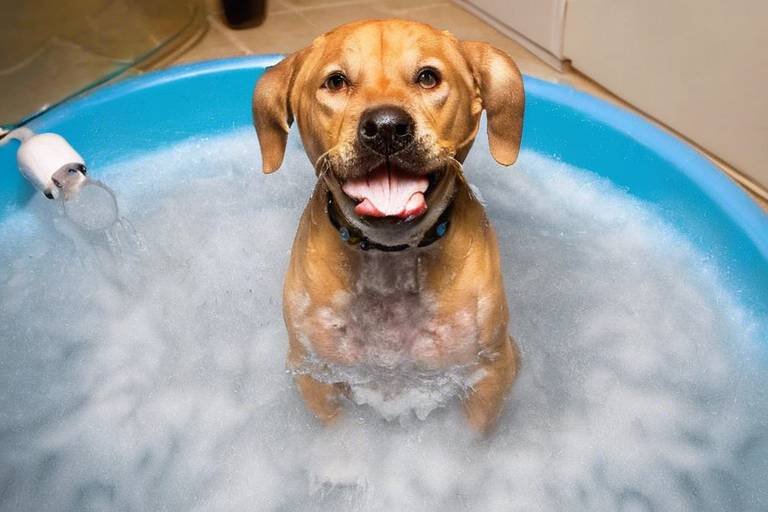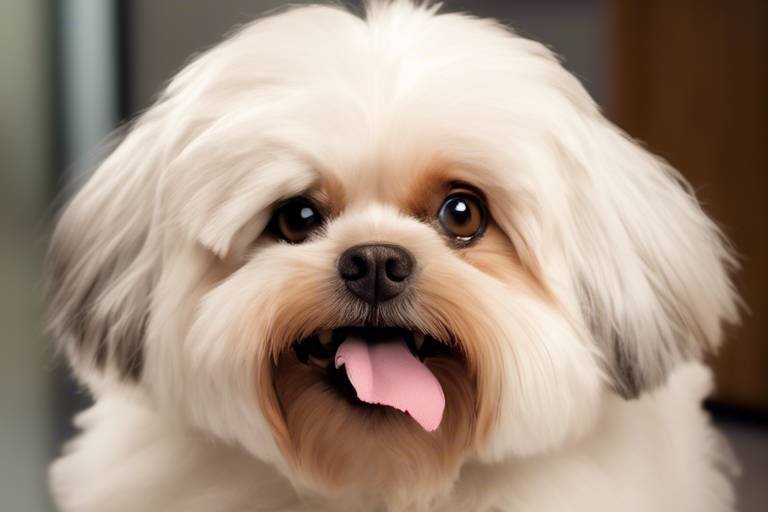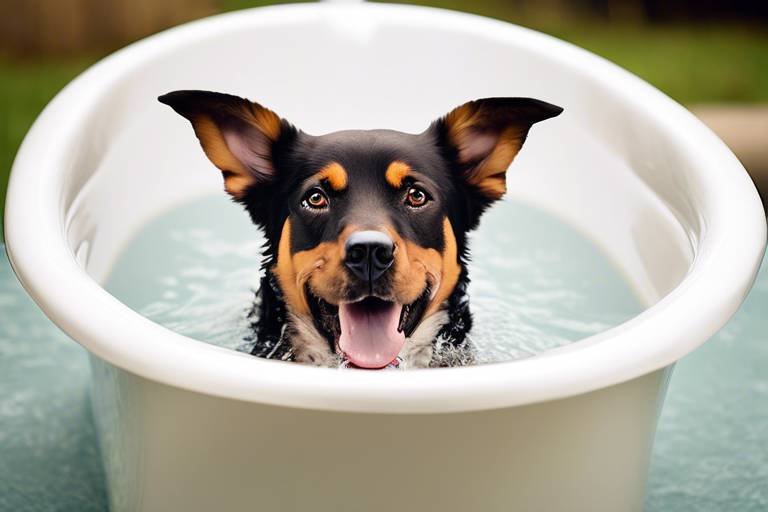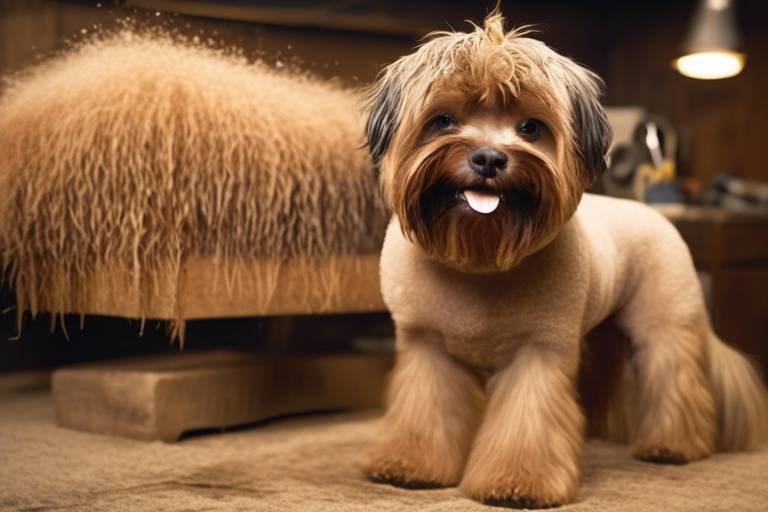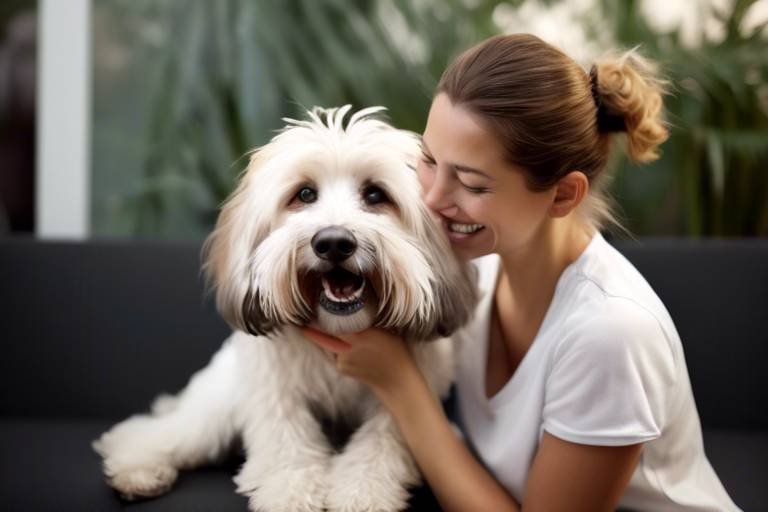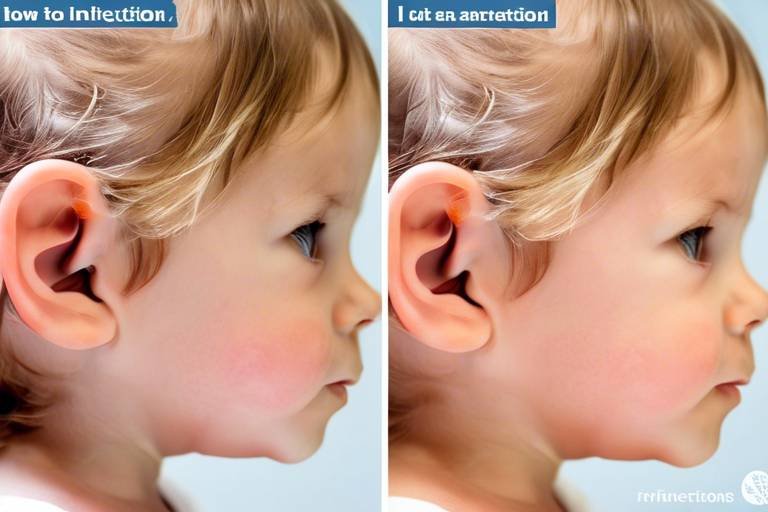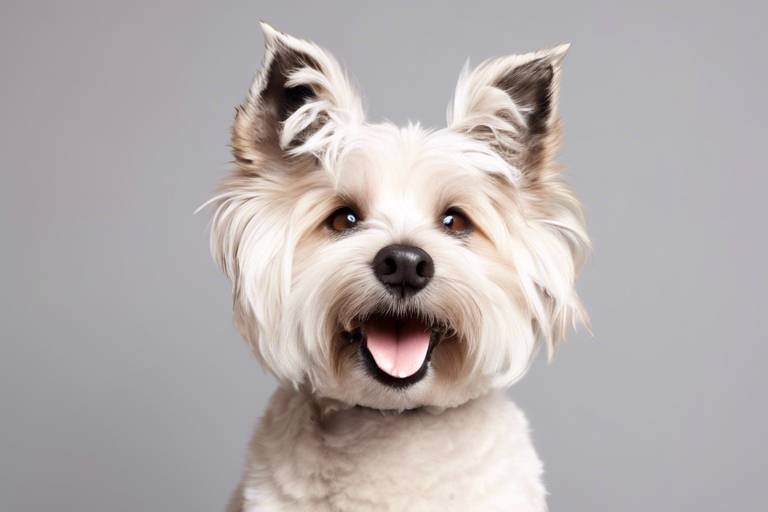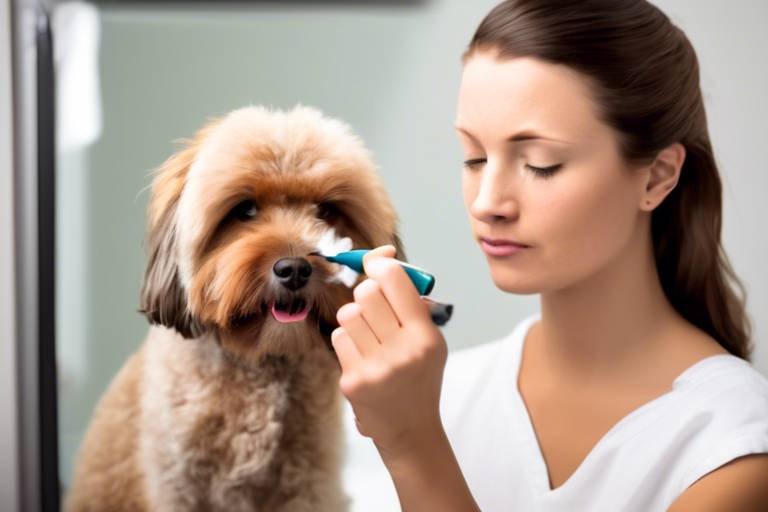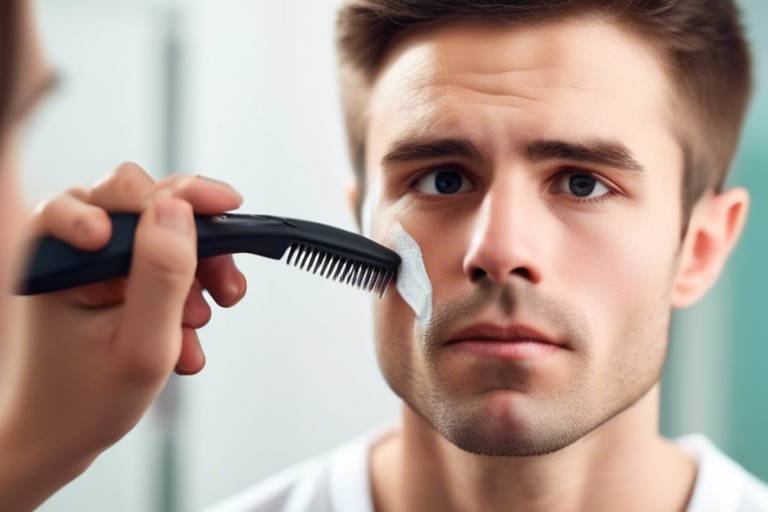The Ultimate Guide to Bathing Your Dog
Welcome to the ultimate guide for bathing your furry friend! As dog owners, we all know that our pets can get a little messy, whether it’s from playing outside, rolling in the grass, or just being their adorable, slobbery selves. Bathing your dog is not just about keeping them clean; it’s also a wonderful opportunity to bond with your pet and ensure their overall health and well-being. But how do you turn what could be a stressful chore into a delightful experience for both you and your pup? Well, you’ve come to the right place! In this comprehensive guide, we’ll explore essential tips, techniques, and products that will help you master the art of dog bathing. So, grab your supplies, roll up your sleeves, and let’s dive in!
Understanding the best time to bathe your dog can significantly affect the process. Think about it: if it’s a hot summer day, your pup might enjoy a refreshing bath, but during the winter, a bath can leave them shivering. Factors like weather, dog activity levels, and breed characteristics should be considered for an optimal bathing experience. For instance, if your dog loves to play in the mud, you might want to schedule a bath shortly after their playtime. But if your dog is particularly anxious, you might want to choose a quieter time when they’re more relaxed.
Before starting, it's crucial to gather all the necessary supplies. Imagine trying to cook a meal without all the ingredients—you’d end up frustrated! The same goes for bathing your dog. Here’s a quick checklist of what you’ll need:
- Dog Shampoo: Choose one that suits your dog's coat type.
- Conditioner: Helps keep their coat soft and manageable.
- Towels: For drying off your pup afterward.
- Brush: To remove any tangles before the bath.
- Non-slip mat: To keep your dog safe in the tub.
Having these items on hand will make the bathing process smoother and more enjoyable for your dog.
Getting your dog ready for a bath can help reduce anxiety and stress. Just like humans, dogs can feel nervous about water and the bathing process. Start by familiarizing them with the bathing area. You might want to let them sniff around and explore the tub or shower before the big event. Using calming techniques, such as gentle petting or speaking in a soothing voice, can create a more relaxed environment for both of you. Remember, the goal is to make this a positive experience, so consider offering treats or toys to encourage your dog to associate bath time with fun!
Selecting the appropriate shampoo for your dog's coat type and skin sensitivity is essential. Just like you wouldn’t use just any soap for your skin, your dog deserves the right products too! Look for shampoos specifically formulated for dogs, as human shampoos can disrupt their skin's pH balance. Understanding the ingredients and their benefits can lead to healthier skin and a shinier coat. For example, oatmeal shampoos are great for dogs with sensitive skin, while those with natural oils can help moisturize a dry coat.
Employing effective bathing techniques can make the process easier and more efficient. Start by wetting your dog’s coat thoroughly, but be cautious around their ears and eyes. Use a handheld showerhead or a cup to gently pour water over them. Once they’re wet, apply the shampoo and lather it in, making sure to massage it into their coat. Rinse thoroughly to avoid any residue, which can irritate their skin. Remember, a good rinse is just as important as the shampoo itself!
After bathing, drying your dog properly is vital. Different methods can be used based on your dog's size and coat type. For short-haired breeds, a simple towel drying might suffice, while long-haired breeds may benefit from a blow dryer set on low. Just be sure to keep the dryer at a safe distance to avoid overheating their skin. Always monitor your dog’s comfort level during this process, as some dogs may be more sensitive to the noise and sensation of a blow dryer.
Once the bath is complete, it’s important to follow up with post-bath care. This includes brushing their coat to remove any tangles and checking for skin issues. You might even want to reward your dog with a treat or some playtime to reinforce positive behavior. This not only helps them associate bath time with good things but also strengthens your bond.
Being aware of common mistakes during the bathing process can prevent negative experiences. Here are a few pitfalls to steer clear of:
- Using human shampoo: This can harm your dog’s skin.
- Neglecting to rinse thoroughly: Residue can cause irritation.
- Bathing too frequently: This can strip natural oils from their coat.
By avoiding these mistakes, you can ensure a better bathing experience for your dog.
Determining how often to bathe your dog depends on various factors, including breed, activity level, and skin type. For example, active dogs that love to roll in the dirt may need baths more frequently, while less active dogs might only require a bath every few weeks. Understanding these elements will help maintain your dog's hygiene without over-bathing. Always consult with your veterinarian if you’re unsure about your dog’s specific needs.
1. How often should I bathe my dog?
It depends on their breed and activity level, but generally, every 4-6 weeks is a good rule of thumb.
2. Can I use human shampoo on my dog?
No, human shampoo can disrupt your dog's skin pH and lead to irritation.
3. What if my dog hates baths?
Try to make the experience more enjoyable with treats and praise, and gradually introduce them to the bathing process.
4. Is it necessary to use conditioner?
While not mandatory, conditioner can help keep your dog's coat soft and manageable, especially for long-haired breeds.

Choosing the Right Time
When it comes to bathe your dog, timing is everything! You might be wondering, "When is the best time to give my furry friend a bath?" Well, there are several factors to consider that can make the bathing experience more enjoyable for both you and your pup. First off, think about the weather. Bathing your dog on a warm, sunny day can be a delightful experience, as it allows for quicker drying and less chance of your dog getting cold afterward. On the flip side, bathing during rainy or extremely cold weather can lead to discomfort for your dog, making it a less-than-ideal situation.
Next, consider your dog's activity levels. If your dog has just come back from a muddy romp in the park, it’s probably a good time to jump into the bath! However, if your dog has been lounging around all day, they might not be too keen on the idea of getting wet. A little playtime before the bath can help expend some energy and make them more amenable to the process.
Another important aspect is your dog's breed characteristics. Some breeds, like Golden Retrievers or Newfoundlands, may need more frequent baths due to their thick, water-absorbent coats. In contrast, breeds like Bulldogs or Yorkshire Terriers may require less frequent bathing. Understanding your dog’s specific needs can help you choose the right time for a bath that caters to their grooming requirements.
Lastly, don’t forget to consider your own schedule. You want to ensure that you have enough time to devote to the bathing process without feeling rushed. A relaxed atmosphere can make a world of difference. So, set aside a day when you can focus entirely on your dog, allowing for a fun and stress-free bath time!
In summary, the right time to bathe your dog can be influenced by:
- Weather conditions - Warm and dry days are ideal.
- Dog's activity level - After a muddy adventure is perfect!
- Breed characteristics - Different breeds have different grooming needs.
- Your schedule - Make sure you have enough time to enjoy the process.
By keeping these factors in mind, you can create a positive bathing experience that your dog will come to love. So, grab those supplies and get ready for some sudsy fun!

Gathering Necessary Supplies
Before diving into the delightful world of dog bathing, it's essential to gather all the necessary supplies. Think of it as preparing for a mini spa day for your furry friend! Having everything on hand not only makes the process smoother but also ensures that your dog feels comfortable and pampered throughout the experience. So, what do you need to have ready?
First and foremost, you'll want to select a high-quality dog shampoo. This is crucial because using the wrong product can lead to skin irritation or an unhappy pup. Look for shampoos that are specifically designed for dogs, taking into account your dog's coat type and any skin sensitivities they may have. For instance, if your dog has a sensitive skin condition, opt for a gentle, hypoallergenic formula. On the other hand, if your pooch has a thick, double coat, a shampoo that helps detangle and soften the fur might be the way to go.
In addition to shampoo, consider having a conditioner handy. While not every dog requires conditioner, it can be a game-changer for those with longer or coarser hair. A good conditioner helps to keep the coat moisturized and can reduce matting, making brushing easier afterward. It's like giving your dog a little extra love!
Next up, you'll need some towels. Dogs can be surprisingly wet and messy after a bath, so having a few absorbent towels ready is a must. You might even want to designate a specific towel just for your dog to make the process feel special. If your dog is particularly large or fluffy, consider using a dog drying coat to help soak up excess water quickly.
Don't forget about brushes and combs. Brushing your dog before and after the bath can help remove loose fur and prevent tangles. Plus, it’s a great way to bond with your pet! Select a brush that suits your dog's coat type—slicker brushes work wonders for long-haired breeds, while bristle brushes are great for short-haired dogs.
Finally, consider having some treats on hand. Bath time can be stressful for some dogs, so rewarding them with treats can create a positive association with the experience. Whether it’s their favorite biscuit or a special toy, having a little something to offer can go a long way in making bath time a fun adventure rather than a dreaded chore.
Here's a quick rundown of the supplies you might need:
| Item | Purpose |
|---|---|
| Dog Shampoo | Cleaning and keeping skin healthy |
| Conditioner | Moisturizing and detangling fur |
| Towels | Drying off your dog |
| Brushes/Combs | Removing loose fur and preventing tangles |
| Treats | Rewarding and comforting your dog |
By gathering these supplies ahead of time, you're setting the stage for a successful and enjoyable bath experience for both you and your four-legged friend. So, roll up your sleeves, gather your goodies, and get ready to make bath time a blast!
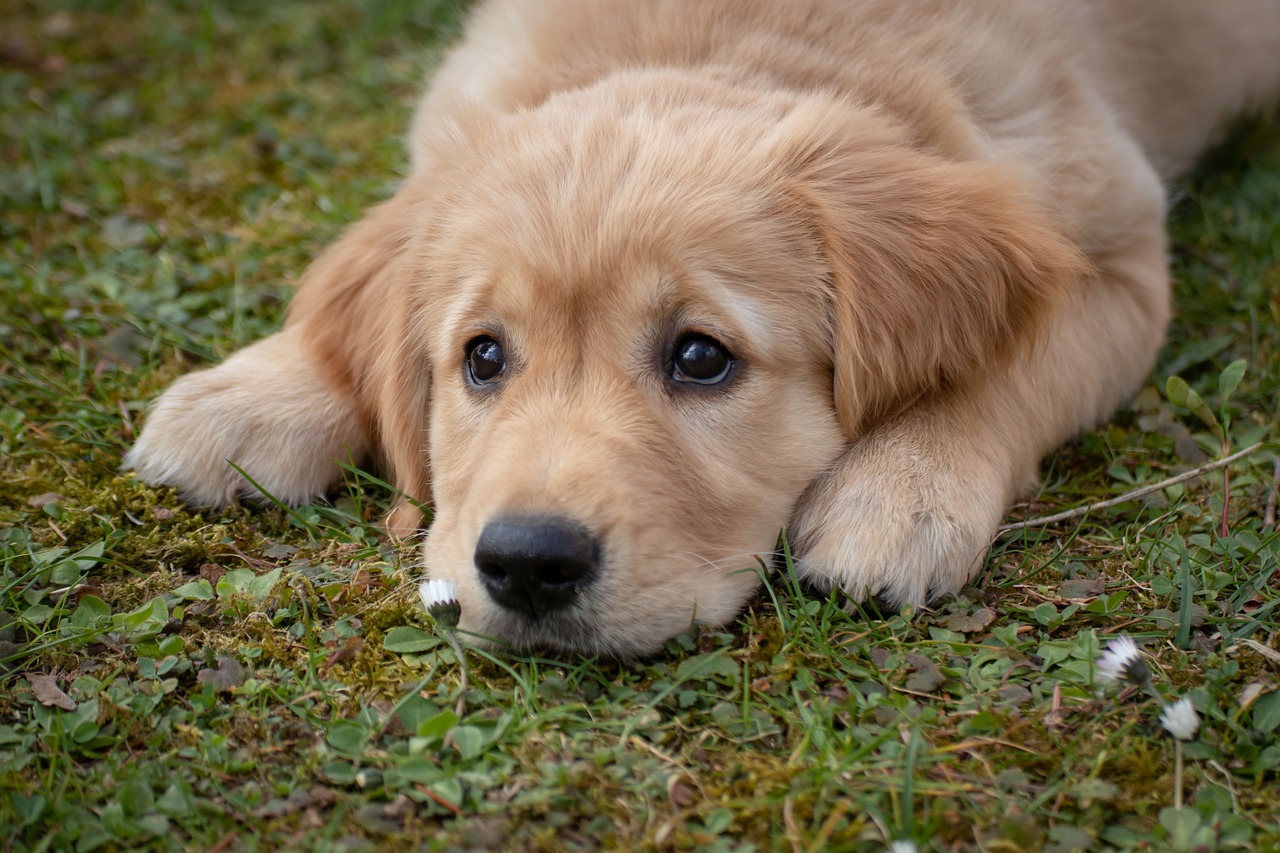
Preparing Your Dog
Getting your dog ready for a bath is just as important as the bath itself. Think of it like prepping for a big event; you want everything to go smoothly, right? First things first, you need to create a calm atmosphere. Dogs can sense our emotions, so if you’re feeling anxious or rushed, they likely will too. Take a deep breath, and give your furry friend some gentle affection to ease any worries.
Next, it’s essential to familiarize your dog with the bathing area. Whether you’re using a bathtub, a shower, or even an outdoor space, let your dog explore the area beforehand. This way, they won’t feel trapped or scared when the time comes for their bath. You can use treats to make the experience more positive. For example, toss a few treats around the bathing area to encourage them to investigate. This little trick works wonders!
Another crucial aspect of preparation is to brush your dog’s coat before the bath. This helps to remove loose fur and tangles, making the bathing process much easier. Plus, it’s a great way to check for any skin issues or irritations that might need attention. If your dog has long hair, consider using a slicker brush or a comb specifically designed for their coat type. Here’s a quick overview of brushing tools:
| Coat Type | Recommended Tool |
|---|---|
| Short Hair | Rubber Brush |
| Medium Hair | Slicker Brush |
| Long Hair | Wide-Toothed Comb |
Once your dog is brushed and the area is set, it’s time to introduce some calming techniques. Consider playing soft music or using a calming spray designed for dogs. You can also try massaging your dog gently to help them relax. This not only makes them feel good but also builds trust between you two, which is vital for a stress-free bathing experience.
Lastly, don’t forget to gather all your supplies beforehand. Having everything at your fingertips will prevent you from leaving your dog unattended during the bath, which could lead to anxiety. Make sure you have your shampoo, conditioner, towels, and a non-slip mat if you’re using a slippery surface. Being prepared is key to a successful and enjoyable bathing session for both you and your dog!
- How can I make my dog more comfortable during bath time? Use treats and praise, and create a calm environment.
- What if my dog hates baths? Gradually introduce them to the bathing area and use positive reinforcement.
- Should I brush my dog before or after the bath? Always brush before the bath to remove loose fur and tangles.
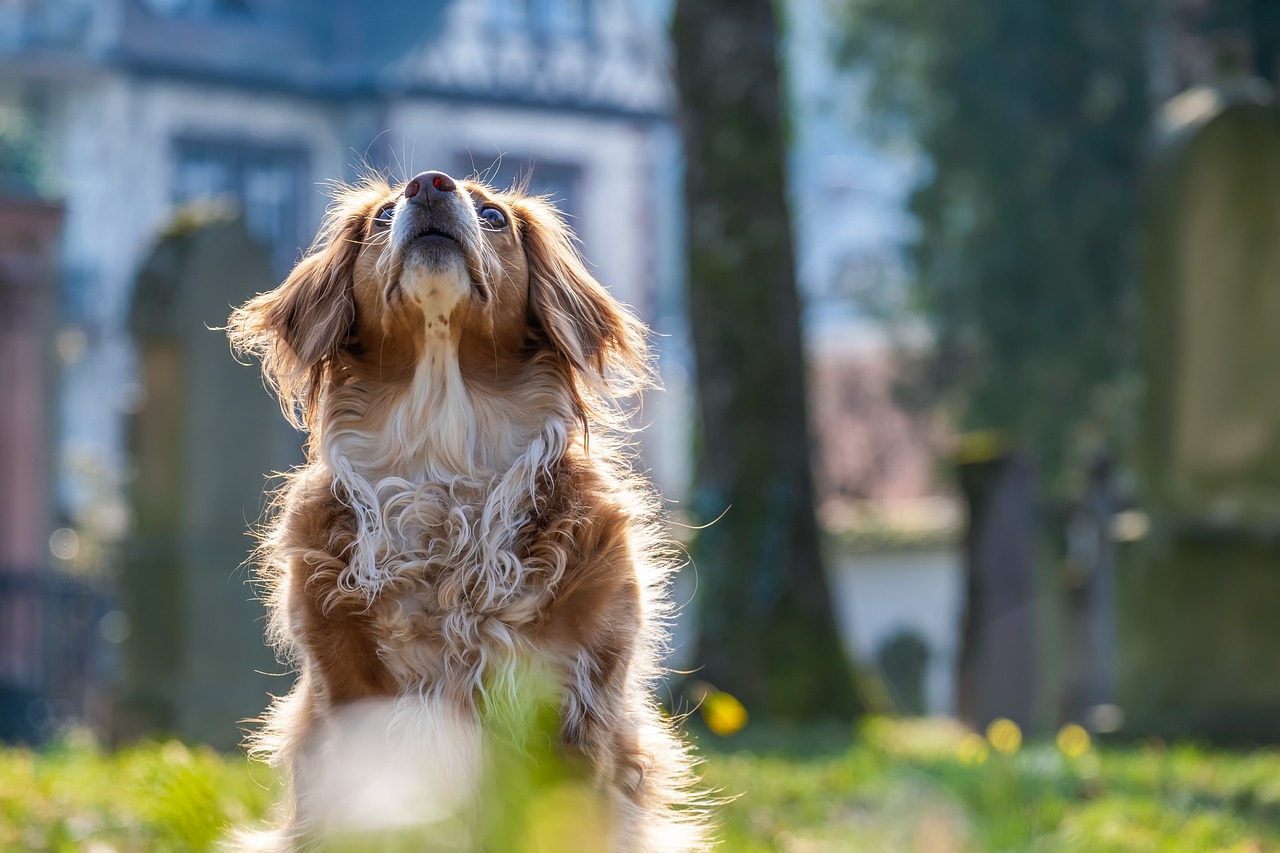
Choosing the Right Shampoo
When it comes to bathing your dog, one of the most crucial decisions you'll make is . Not all shampoos are created equal, and just like humans, dogs have unique needs when it comes to their skin and coat care. The right shampoo can mean the difference between a shiny, healthy coat and a dull, itchy mess. So, how do you navigate through the sea of options available? Let's dive in!
First and foremost, consider your dog's coat type. Is your dog a fluffy Golden Retriever, a sleek Dachshund, or a wiry Terrier? Each breed has its own specific grooming requirements. For instance, long-haired breeds may benefit from a moisturizing shampoo that helps detangle their fur, while short-haired breeds might need a formula that emphasizes shine and cleanliness. Understanding these distinctions is key to selecting a shampoo that will cater to your dog's specific needs.
Next, pay attention to your dog's skin sensitivity. Some dogs have skin that is more prone to allergies or irritations. In such cases, look for shampoos that are hypoallergenic or specifically designed for sensitive skin. These products typically contain fewer harsh chemicals and more natural ingredients, which can be a lifesaver for your furry friend. Always check the ingredient list and avoid shampoos that contain sulfates, parabens, or artificial fragrances.
Another important aspect to consider is the purpose of the shampoo. Are you looking for a general cleaning solution, or does your dog have specific needs? Some shampoos are formulated to tackle issues like fleas and ticks, while others focus on odor control or moisturizing dry skin. If your dog has a specific condition, such as dandruff or oily skin, consult your veterinarian for recommendations on specialized shampoos that can help.
To give you a clearer picture, here's a simple table comparing different types of dog shampoos:
| Shampoo Type | Best For | Key Ingredients |
|---|---|---|
| Moisturizing | Dry or flaky skin | Aloe Vera, Oatmeal |
| Hypoallergenic | Sensitive skin | Natural extracts, No dyes |
| Flea & Tick | Infested dogs | Pyriproxyfen, Permethrin |
| Odor Control | Smelly dogs | Odor neutralizers, Baking soda |
Lastly, don't forget to consider your dog's personal preference. Some dogs may respond better to certain scents or textures. If possible, try to introduce your dog to a small amount of the shampoo before the big bath day. This can help you gauge their reaction and make the bathing experience more enjoyable for both of you. After all, a happy dog makes for a happy owner!
In conclusion, choosing the right shampoo for your dog is about more than just picking a pretty bottle off the shelf. It requires a bit of research and understanding of your dog's unique needs. By taking the time to select a shampoo that caters to their coat type, skin sensitivity, and specific requirements, you can ensure that bath time becomes a positive experience for your furry friend. Remember, a clean dog is a happy dog!
- How often should I bathe my dog?
It depends on the breed and activity level. Generally, every 4-6 weeks is a good rule of thumb. - Can I use human shampoo on my dog?
No, human shampoos can disrupt the pH balance of a dog's skin, leading to irritation. - What if my dog doesn’t like baths?
Try to make the experience fun with treats and praise, or consider using a professional groomer.

Bathing Techniques
This comprehensive guide will explore essential tips, techniques, and products for successfully bathing your dog, ensuring a positive experience for both you and your furry friend.
Understanding the best time to bathe your dog can significantly affect the process. Factors like weather, dog activity levels, and breed characteristics should be considered for an optimal bathing experience.
Before starting, it's crucial to gather all the necessary supplies. This includes shampoos, conditioners, towels, and brushes, which will help make the bathing process smoother and more enjoyable for your dog.
Getting your dog ready for a bath can help reduce anxiety and stress. Familiarizing them with the bathing area and using calming techniques can create a more relaxed environment for both of you.
Selecting the appropriate shampoo for your dog's coat type and skin sensitivity is essential. Understanding the ingredients and their benefits can lead to healthier skin and a shinier coat.
When it comes to bathing your dog, the right techniques can transform a potentially chaotic experience into a delightful bonding session. First things first, make sure your dog is calm before starting. A little playtime or a quick walk can help expend some of that excess energy. Once you’re ready, choose a suitable bathing area. This could be a bathtub, a shower, or even outdoors if the weather permits! Just ensure the surface is non-slip to prevent any accidents.
Now, let’s dive into the actual bathing process. Start by wetting your dog's coat thoroughly, but be careful not to spray water directly into their face. Instead, use a handheld showerhead or a cup to gently pour water over them. This helps your dog feel more at ease. Next, apply a small amount of shampoo, starting from the neck and working your way down to the tail. Remember to lather gently—you want to clean without causing discomfort. A good tip is to use your fingers to massage the shampoo into their coat, which not only cleans but also feels like a spa treatment for your pup!
After you’ve lathered up, it’s time for the rinse. Be thorough here; leftover shampoo can irritate your dog's skin. Use lukewarm water to rinse, and make sure to get all the suds out, especially around sensitive areas like the ears and belly. If your dog has long hair, consider using a conditioner to help detangle their coat. Apply it in the same manner as the shampoo, and then rinse well.
Finally, once your dog is all clean, it’s time for drying. This can be done with a towel or a blow dryer set on a low, cool setting. Be patient during this process; some dogs love the dryer, while others might find it a bit scary. If your dog seems anxious, stick to towel drying. If you’re using a towel, gently rub their coat to absorb as much water as possible without causing tangles. Remember, the goal is to make this experience as enjoyable as possible for your furry friend!
After bathing, drying your dog properly is vital. Different methods, including air drying and towel drying, can be used based on your dog's size and coat type, ensuring they stay comfortable.
Once the bath is complete, it's important to follow up with post-bath care. This includes brushing their coat, checking for skin issues, and offering rewards to reinforce positive behavior.
Being aware of common mistakes during the bathing process can prevent negative experiences. Avoiding issues like using human shampoo or neglecting to rinse thoroughly can lead to better outcomes for your dog.
Determining how often to bathe your dog depends on various factors, including breed, activity level, and skin type. Understanding these elements will help maintain your dog's hygiene without over-bathing.
Q: How often should I bathe my dog?
A: It depends on the breed and activity level. Generally, once a month is sufficient for most dogs, but some may require more frequent baths.
Q: Can I use human shampoo on my dog?
A: No, it's best to use shampoo specifically formulated for dogs, as human shampoos can disrupt their skin's natural oils.
Q: What if my dog hates baths?
A: Try to make the experience positive with treats and praise. Gradually acclimating them to water can also help.
Q: Is it safe to use a blow dryer on my dog?
A: Yes, but ensure it's set to low and cool. Some dogs may be frightened by the noise, so approach with caution.
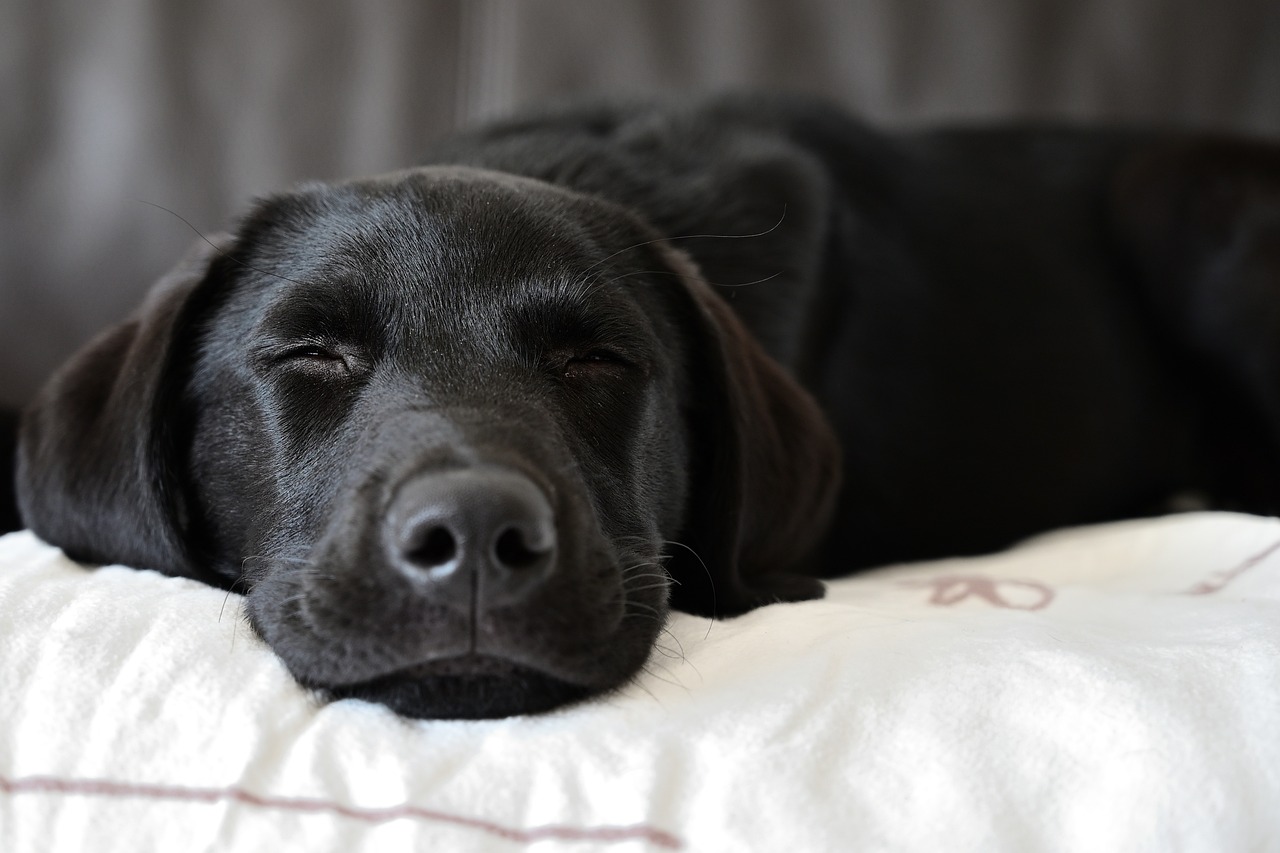
Drying Your Dog
After that refreshing bath, your dog is probably feeling great, but now comes the important part: drying them off! Properly drying your dog is crucial not just for comfort, but also for maintaining their skin health. Wet fur can lead to skin irritations and even infections, especially in breeds with thick coats. So, how do you go about it? Let’s dive into some effective drying techniques.
First, you have a couple of options when it comes to drying your dog: towel drying and air drying. Towel drying is often the go-to method for many dog owners. It’s simple, effective, and doesn’t require any fancy equipment. Just grab a few absorbent towels and start gently rubbing your dog down. Make sure to pay attention to those tricky areas like the ears and underbelly, where moisture can linger. You might be surprised how much water a towel can soak up!
However, if your dog has a long or thick coat, towel drying alone might not cut it. In such cases, a dog dryer can be a game-changer. These specialized dryers are designed to blow warm air, helping to fluff up the coat while effectively removing moisture. Just be sure to keep the dryer at a safe distance to avoid overheating your pup. Remember, it’s not a race! Take your time and make it a pleasant experience.
For smaller breeds or dogs with fine coats, air drying can be a suitable option. Just let them roam around in a warm room, but keep an eye on them to ensure they don’t get too chilly. You can also use a gentle fan to speed up the process, but avoid placing it too close to your dog to prevent any anxiety or discomfort.
| Drying Method | Best For | Pros | Cons |
|---|---|---|---|
| Towel Drying | All breeds | Simple, effective, no equipment needed | Can be time-consuming for thick coats |
| Dog Dryer | Long/thick coats | Quick and efficient, fluffs coat | Requires equipment, potential anxiety for dogs |
| Air Drying | Small breeds/fine coats | Natural and stress-free | Can take a long time, risk of getting cold |
Regardless of the method you choose, always keep your dog’s comfort in mind. Use positive reinforcement throughout the drying process. A few treats or gentle praise can turn this chore into a bonding experience. After all, your dog deserves to feel pampered after their bath!
Lastly, it’s essential to check for any damp spots after drying. Areas like between the toes and under the tail can trap moisture, leading to potential skin issues. If you notice any lingering wetness, simply towel dry those areas again. Keeping your dog dry is not just about comfort; it’s about health!
- How often should I dry my dog after a bath? Always dry your dog thoroughly after every bath to prevent skin issues.
- Can I use a human hairdryer? It's best to avoid using human hairdryers as they can get too hot and may cause discomfort.
- Is air drying safe for all dogs? While air drying is generally safe, ensure your dog is in a warm environment to prevent them from getting cold.
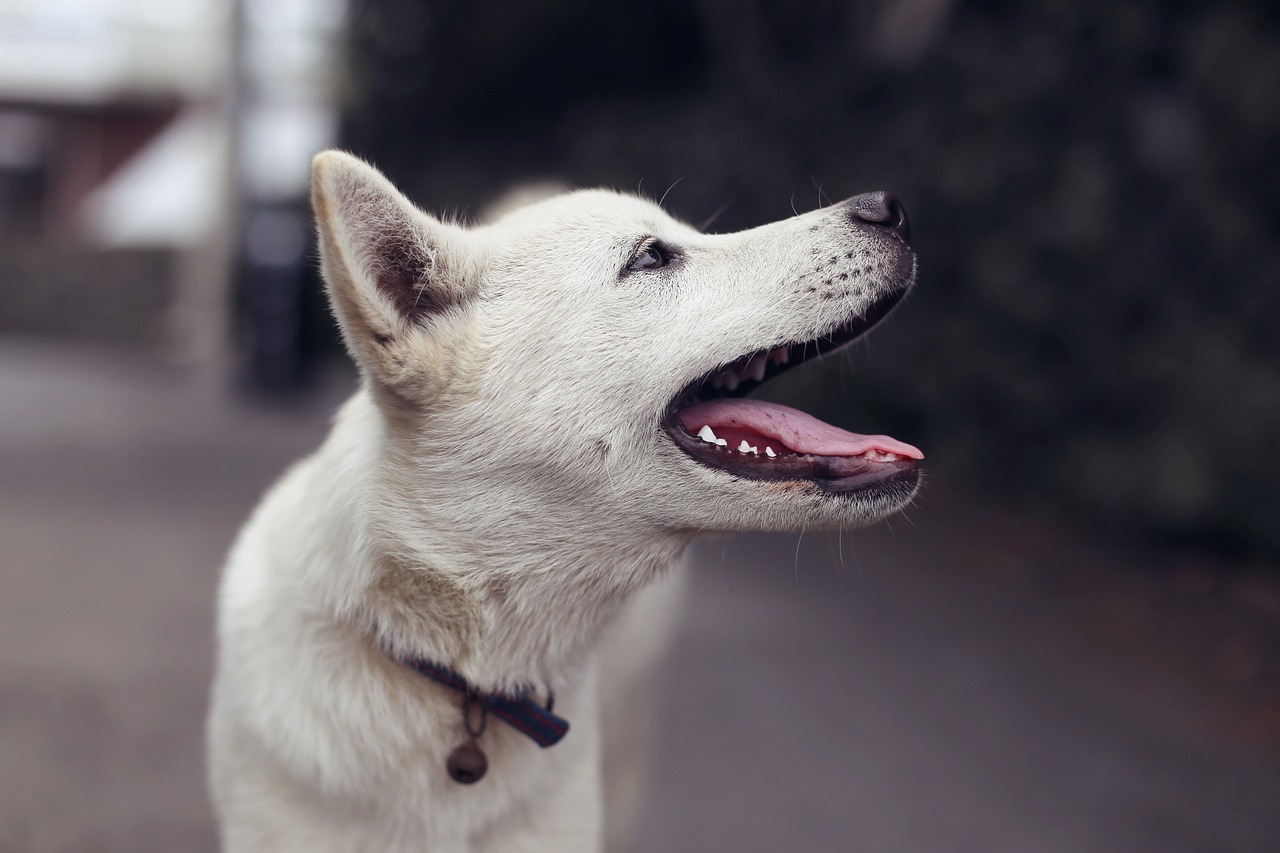
Post-Bath Care
Congratulations! You've successfully bathed your dog, and now it's time to focus on . This step is crucial not only for your dog's hygiene but also for their overall well-being. After the waterworks, your furry friend may feel a bit disoriented or anxious, so it's essential to approach this phase with care and affection. First and foremost, brushing your dog's coat is an excellent way to remove any tangles or loose hair while also distributing natural oils that promote a healthy shine. Make sure to choose a brush that suits your dog's coat type—whether it's a slicker brush for long-haired breeds or a bristle brush for short-haired ones.
Next, it's important to conduct a skin check. While bathing, you might have noticed some areas of concern, but this is your chance to look closely. Check for any signs of irritation, redness, or unusual bumps. If you find anything that seems off, don’t hesitate to consult your veterinarian for advice. Remember, your dog can’t tell you when something is wrong, so you need to be their advocate!
After the brushing and skin inspection, why not reward your pup for being such a good sport? A little treat or some extra playtime can go a long way in reinforcing positive behavior. Dogs are great at associating experiences with rewards, so this will help them look forward to bath time in the future. You can also offer them their favorite toy or engage in a fun game to lift their spirits.
Additionally, consider the environment post-bath. Make sure they have a cozy spot to dry off and relax. If your dog is small or has a short coat, they might feel chilly after a bath. Providing a warm blanket or a soft bed can make them feel safe and comfortable. For larger breeds, ensure they have enough space to shake off any remaining water and settle down without slipping on wet surfaces.
Lastly, don't forget to keep your dog's ears dry. Water trapped in the ears can lead to infections, especially in breeds prone to ear issues. You can gently wipe the outer part of their ears with a soft towel, but avoid inserting anything deep into the ear canal. If your dog enjoys it, a gentle ear rub can also help them relax.
In summary, post-bath care is all about ensuring your dog feels loved, secure, and healthy. By brushing their coat, checking their skin, rewarding their good behavior, and creating a comfortable environment, you’ll not only make bath time easier in the future but also strengthen the bond between you and your furry friend.
- How often should I bathe my dog? The frequency depends on your dog's breed, activity level, and coat type. Generally, every 4 to 6 weeks is a good rule of thumb.
- Can I use human shampoo on my dog? No, human shampoos can disrupt your dog's skin pH balance. Always use a shampoo specifically formulated for dogs.
- What should I do if my dog hates baths? Gradually introduce them to the bathing process. Use treats and praise to create a positive association with bath time.
- Is it okay to bathe my dog in the winter? Yes, but make sure to dry them thoroughly and provide warmth afterward to prevent them from getting cold.
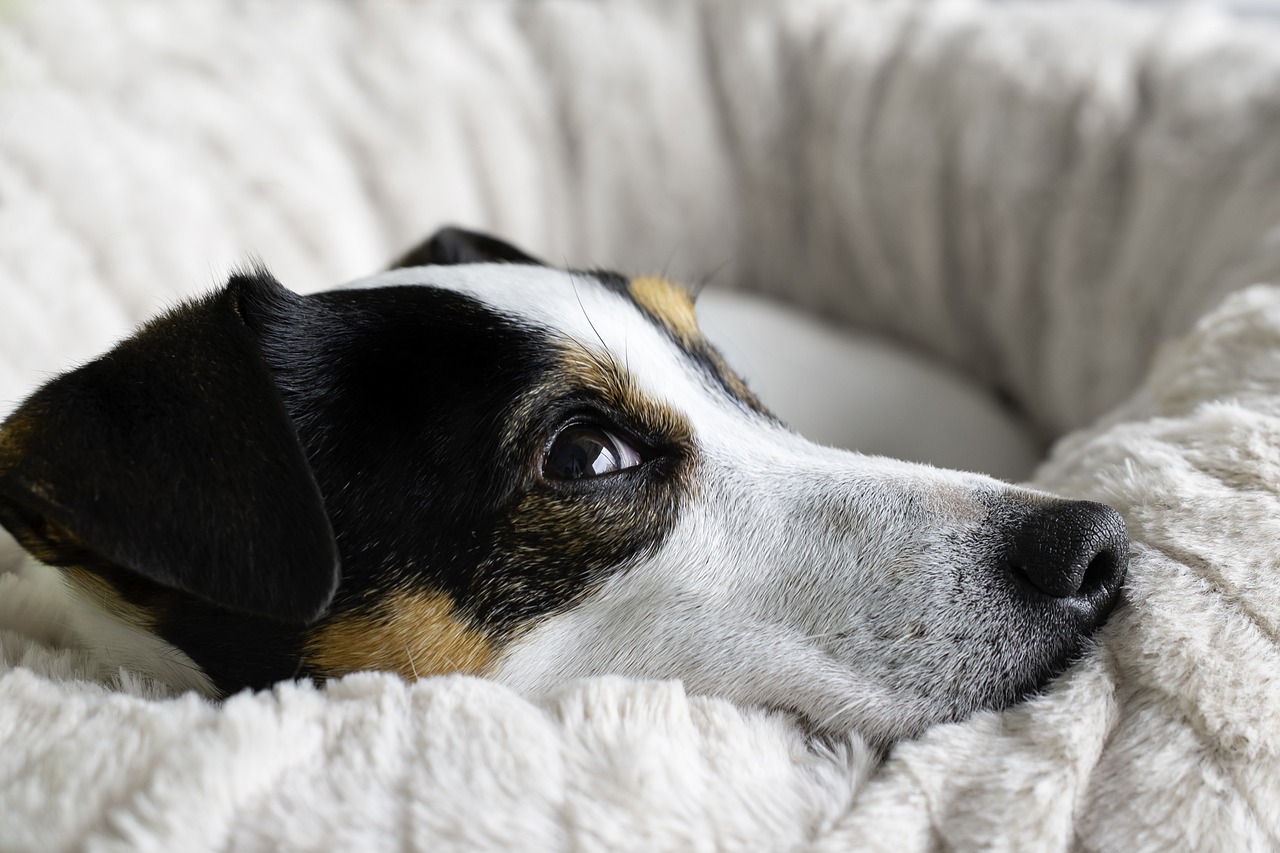
Common Mistakes to Avoid
Bathing your dog can be a delightful experience, but it can also go horribly wrong if you're not careful. Just like cooking a gourmet meal, if you skip the essential ingredients or make a mistake in the process, you might end up with a disaster. So, let's dive into some common mistakes to avoid while bathing your furry friend, ensuring a smooth and enjoyable experience for both of you.
One of the biggest blunders is using human shampoo on your dog. You might think, "Hey, shampoo is shampoo, right?" Wrong! Human shampoos are formulated for our skin's pH levels, which are different from dogs. Using them can lead to skin irritations or allergies. Instead, opt for a dog-specific shampoo that caters to their unique needs. Trust me, your dog will thank you with a wagging tail!
Another common mistake is neglecting to rinse thoroughly. Imagine washing your hair and leaving some shampoo in—it would be uncomfortable, right? The same goes for your pup. Leftover shampoo can cause skin irritations and itchiness. Make sure to rinse your dog completely, ensuring all soap is washed away. Use your hands to feel for any residue, and if you find any, rinse some more!
Additionally, many pet owners underestimate the importance of temperature control. Bathing your dog in water that's too hot or too cold can lead to a negative experience. Always test the water temperature before introducing your dog to the tub. Aim for a warm, comfortable temperature that feels good to you, and you'll be on the right track. This simple step can make a world of difference in how your dog perceives bath time.
Also, don't forget about the environment! A slippery tub can turn bath time into a mini horror movie for your pup. To prevent accidents, consider using a rubber mat or a non-slip surface in the bathing area. Not only will this help your dog feel more secure, but it will also make the experience less stressful for both of you. Remember, a calm dog is a happy dog!
Lastly, it's crucial to avoid rushing the process. Bathing your dog shouldn't feel like a race against time. Take your time to ensure they’re comfortable and relaxed. If your dog is anxious, try using calming techniques, such as speaking in a soothing voice or offering treats. This will help create a positive association with bath time, making it easier in the future.
In summary, avoiding these common mistakes can transform bath time from a chore into a bonding experience. Remember to use dog-friendly products, rinse thoroughly, control water temperature, ensure a safe environment, and take your time. By doing so, you'll not only keep your dog clean but also strengthen the trust and love between you and your furry companion.
Here are some common questions pet owners have about bathing their dogs:
- How often should I bathe my dog? The frequency depends on the breed, activity level, and skin type. Generally, dogs with oily coats may need more frequent baths than those with dry skin.
- Can I use baby shampoo on my dog? It's best to avoid using baby shampoo as it may not be pH balanced for dogs. Stick to products designed specifically for canine use.
- What should I do if my dog hates baths? Gradually introduce them to the bathing area, use treats, and create a positive association with bath time. Patience is key!
- Is it okay to bathe my dog outside? Yes, bathing outside can be a great option, especially in warm weather. Just ensure you have the right setup to keep your dog comfortable.
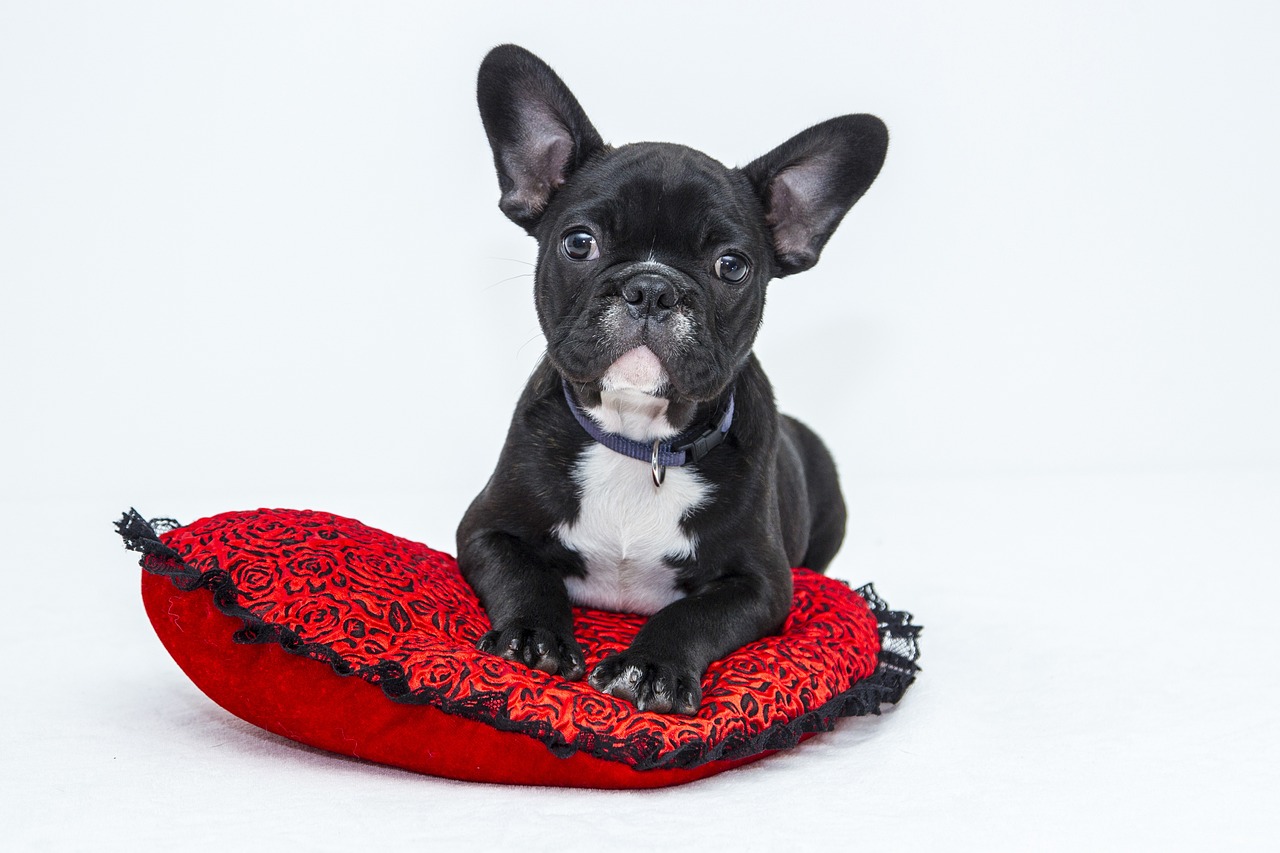
Frequency of Baths
Determining how often to bathe your dog is not a one-size-fits-all situation; it varies based on several key factors. Just like us, dogs have different needs depending on their breed, activity level, and skin type. For instance, a Golden Retriever who loves to romp around in the mud will likely need more frequent baths than a Chihuahua who prefers lounging on the couch. So, how do you figure out the right bathing frequency for your furry friend?
Firstly, consider your dog's coat type. Dogs with longer, thicker fur may require more regular grooming and bathing to prevent matting and dirt buildup. On the other hand, short-haired breeds tend to stay cleaner longer and may only need a bath every few months. Here’s a quick guide to help you decide:
| Breed Type | Recommended Bath Frequency |
|---|---|
| Long-haired breeds (e.g., Golden Retriever, Afghan Hound) | Every 4-6 weeks |
| Medium-haired breeds (e.g., Beagle, Bulldog) | Every 6-8 weeks |
| Short-haired breeds (e.g., Boxer, Dachshund) | Every 2-3 months |
| Hypoallergenic breeds (e.g., Poodle, Bichon Frise) | Every 4-6 weeks |
Next, think about your dog's activity level. If your dog is an adventurous spirit who enjoys outdoor activities, regular baths might be necessary to keep their coat clean and free of dirt and debris. Conversely, if your dog is more of a homebody, you might find that they can go longer between baths.
Additionally, consider your dog's skin type. Some dogs have sensitive skin that can become irritated if bathed too frequently. In these cases, it’s best to stick to a schedule that allows their skin to maintain its natural oils. Always consult your veterinarian if you're unsure about the best bathing routine for your dog.
Lastly, keep in mind that the season can also play a role in how often you should bathe your dog. During warmer months, when your dog might be more active outside, you may find that they need baths more often. In colder months, however, you might want to reduce the frequency to avoid drying out their skin.
In conclusion, understanding the frequency of baths for your dog is crucial for their overall health and happiness. By considering their breed, activity level, skin type, and the season, you can create a bathing schedule that keeps your furry friend looking and feeling their best!
- How often should I bathe my dog? It depends on breed, activity level, and skin type. Generally, every 4-8 weeks is a good rule of thumb.
- Can I use human shampoo on my dog? No, human shampoos can irritate a dog's skin. Always use dog-specific shampoo.
- What if my dog hates baths? Gradually introduce them to the bathing process and use treats to create a positive association.
Frequently Asked Questions
- How often should I bathe my dog?
The frequency of bathing your dog can vary based on several factors such as breed, coat type, and activity level. Generally, dogs with oily coats may need a bath every week, while those with dry skin may only require a bath every few months. Always consider your dog's specific needs and consult your vet if unsure!
- What type of shampoo should I use for my dog?
Choosing the right shampoo is crucial for your dog's skin health. Look for shampoos specifically formulated for dogs, as human shampoos can disrupt their skin's pH balance. If your dog has sensitive skin or allergies, opt for hypoallergenic or oatmeal-based shampoos. Always read the labels to ensure the ingredients are safe!
- Can I bathe my dog in cold weather?
Bathing your dog in cold weather is possible, but you need to take extra precautions. Ensure the water is warm, and try to keep the bathing area draft-free. After the bath, dry your dog thoroughly to prevent them from getting cold. A warm, cozy environment post-bath will help keep them comfortable!
- What should I do if my dog hates baths?
If your dog is not a fan of baths, there are several techniques you can try. Start by getting them used to the bathing area without water. Use treats and praise to create positive associations. Gradually introduce water and keep the sessions short and stress-free. Patience and consistency are key!
- Is it necessary to use conditioner after shampooing?
Using a conditioner after shampooing can be beneficial, especially for dogs with long or thick coats. Conditioners help to detangle fur, making it easier to brush and reducing matting. They also add moisture, which can be great for your dog's skin and coat health. If your dog has a short coat, a conditioner may not be necessary, but it won't hurt!
- How can I dry my dog after a bath?
There are several methods to dry your dog after a bath. You can use a towel to gently pat them dry, avoiding vigorous rubbing that can irritate their skin. For dogs that tolerate it, a blow dryer on a low, cool setting can speed up the drying process. Just make sure to keep it at a safe distance and avoid overheating!
- What are some common mistakes to avoid when bathing my dog?
Some common mistakes include using human shampoo, which can irritate your dog's skin, and not rinsing thoroughly, leaving soap residue that can cause itching. Additionally, avoid bathing your dog too frequently, as it can strip their coat of natural oils. Always take your time and follow proper techniques!
- Can I bathe my puppy?
Yes, you can bathe your puppy, but it's important to wait until they are at least 8 weeks old and have had their vaccinations. Use a gentle puppy shampoo, and keep the bath experience positive. Puppies are usually more sensitive, so ensure the water is warm and the environment is calm!

